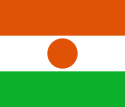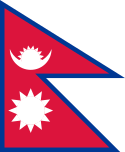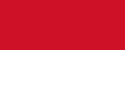Międzynarodowa Unia Pięcioboju Nowoczesnego
| Siedziba | Monako |
|---|---|
| Członkowie | 115 federacji narodowych |
| Prezydent | Dr. h.c Klaus Schormann |
| Utworzenie | 13 sierpnia 1948 |
| Strona internetowa | |
Międzynarodowa Unia Pięcioboju Nowoczesnego (fr. Union Internationale de Pentathlon Moderne; ang. International Modern Pentathlon Union) – międzynarodowa federacja organizująca zawody w pięcioboju nowoczesnym i pięciu innych dyscyplin. Została założona 13 sierpnia 1948 roku. Od 1997 roku siedziba mieści się w Monako.
Historia
Pięciobój (składający się z biegu na długość stadionu, skakaniu, rzucaniu włócznią i dyskiem oraz zapasów) po raz pierwszy został przedstawiony na 18. igrzyskach olimpijskich w 708 r. p.n.e. Zwycięzcę w tej dyscyplinie nazywano „Victor Ludorum“. Francuski baron Pierre de Coubertin starał się od 1909 roku przywrócić pięciobój do igrzysk. Na 14. sesji Międzynarodowego Komitetu Olimpijskiego podjęto decyzję o włączeniu do programu nowożytnych igrzysk olimpijskich[1].
Pięciobój nowoczesny zadebiutował na 5. igrzyskach olimpijskich w 1912 roku w Sztokholmie, obejmując obecnie rozgrywane dyscypliny (strzelanie z pistoletu, szermierkę, pływanie, jazdy konnej i biegania). Pierre de Coubertin był przekonany, że pięciobój nowoczesny kształtuje ludzi pod względem fizycznym i moralnym. Byli to idealni sportowcy. Wymagało to od zawodnika dużo odwagi, koordynacji, sprawności fizycznej, samodyscypliny i elastyczności[1].
Połączenie tych umiejętności pozwala na rywalizację w trzech lub czterech igrzyskach. Dzieje się tak, ponieważ czas pływania i biegu w dużej mierze zależy od doświadczenia i techniki. Najstarszym złotym medalistą igrzysk został Paweł Ledniow w 1980 roku, który miał 38 lat, najmłodszy zaś – Anatolij Starostin miał 20 lat[1].
Zarząd
Zarząd UIPM składa się 21 osób[2].
- Prezydent: Dr. h.c. Klaus Schormann (Niemcy) (od 1993 r.)
- Pierwszy wiceprezydent: Juan Antonio Samaranch Salisachs (Hiszpania)
- Wiceprezydent: Joël Bouzou (Francja)
- Wiceprezydent ds. biznesu: Wiaczesław Aminow (Rosja)
- Wiceprezydent: Berik Imaszew (Kazachstan)
- Wiceprezydent: Juan Manzo Orañegui (Meksyk)
- Sekretarz generalny: Shiny Fang (Chińska Republika Ludowa)
- Skarbnik: John Helmick (Stany Zjednoczone)
- Członek do sportu: Janusz Pyciak-Peciak (Polska)
- Członek do marketingu: Martin Dawe (Wielka Brytania)
- Członek do mediów: Andrejus Zadneprovskis (Litwa)
- Członek do rozwoju: Wiaczesław Maliszew (Gruzja)
- Przewodniczący Komitetu Medycznego: Natalja Ofitserowa (Białoruś)
- Przewodniczący Komitetu Sportowego: Aya Medany (Egipt)
- Przewodniczący Komitetu Trenerskiego: Christian Roudaut (Francja)
- Prezydent Konfederacji Afrykańskiej: Nundkishor Fakun (Mauritius)
- Prezydent Konfederacji Azjatyckiej: Sang-woo Park (Korea Południowa)
- Prezydent Konfederacji Europejskiej: Dmitry Swatkowsky (Rosja)
- Prezydent Konfederacji Ameryki Północnej i Karaibów: Robert Stull (Stany Zjednoczone)
- Prezydent Konfederacji Oceanii: Kitty Chiller (Australia)
- Prezydent Konfederacji Ameryki Południowa: Jorge Salas (Argentyna)
Federacje
UIPM jest zrzeszona ze 115 federacjami narodowymi[3].
- Afryka
- Ameryka Południowa
- Ameryka Północna i Karaiby
- Azja
- Europa
 Armenia
Armenia Austria
Austria Azerbejdżan
Azerbejdżan Belgia
Belgia Białoruś
Białoruś Bułgaria
Bułgaria Chorwacja
Chorwacja Cypr
Cypr Czechy
Czechy Dania
Dania Estonia
Estonia Finlandia
Finlandia Francja
Francja Grecja
Grecja Gruzja
Gruzja Hiszpania
Hiszpania Holandia
Holandia Irlandia
Irlandia Izrael
Izrael Kosowo
Kosowo Litwa
Litwa Luksemburg
Luksemburg Łotwa
Łotwa Mołdawia
Mołdawia Monako
Monako Niemcy
Niemcy Polska
Polska Portugalia
Portugalia Rosja
Rosja Rumunia
Rumunia Serbia
Serbia Słowacja
Słowacja Szwajcaria
Szwajcaria Szwecja
Szwecja Turcja
Turcja Ukraina
Ukraina Węgry
Węgry Wielka Brytania
Wielka Brytania Włochy
Włochy
- Oceania
Linki zewnętrzne
- Oficjalna strona UIPM (ang.)
Przypisy
- ↑ a b c History (ang.). [dostęp 2018-12-06].
- ↑ Executive Board (ang.). [dostęp 2018-12-06].
- ↑ Member Federations (ang.). [dostęp 2018-12-06].
Media użyte na tej stronie
Flag of Namibia
Please do not replace the simplified code by a version created with Inkscape or another vector graphics editor❗
Flag of Senegal
Flag of the Ivory Coast, written by Jon Harald Søby, modified by Zscout370. The colors match to what is reported at http://fotw.vexillum.com/flags/ci.html.
Łatwo można dodać ramkę naokoło tej grafiki
Made by author of Xramp, first uploaded by Denelson83 as Flag of Ecuador.svg, modifications by Husunqu.
The flag of the Dominican Republic has a centered white cross that extends to the edges. This emblem is similar to the flag design and shows a bible, a cross of gold and 6 Dominican flags. There are branches of olive and palm around the shield and above on the ribbon is the motto "Dios,Patria!, Libertad" ("God, Country, Freedom") and to amiable freedom. The blue is said to stand for liberty, red for the fire and blood of the independence struggle and the white cross symbolized that God has not forgotten his people. "Republica Dominicana". The Dominican flag was designed by Juan Pablo Duarte, father of the national Independence of Dominican Republic. The first dominican flag was sewn by a young lady named Concepción Bona, who lived across the street of El Baluarte, monument where the patriots gathered to fight for the independence, the night of February 27th, 1844. Concepción Bona was helped by her first cousin María de Jesús Pina.
The national and official state flag of Haiti; arms obtained from http://www.webchantier.com/. The civil flag can be found at here.
Flag of Jamaica. “The sunshine, the land is green, and the people are strong and bold” is the symbolism of the colours of the flag. GOLD represents the natural wealth and beauty of sunlight; GREEN represents hope and agricultural resources; BLACK represents the strength and creativity of the people. The original symbolism, however, was "Hardships there are, but the land is green, and the sun shineth", where BLACK represented the hardships being faced.
The flag of Navassa Island is simply the United States flag. It does not have a "local" flag or "unofficial" flag; it is an uninhabited island. The version with a profile view was based on Flags of the World and as a fictional design has no status warranting a place on any Wiki. It was made up by a random person with no connection to the island, it has never flown on the island, and it has never received any sort of recognition or validation by any authority. The person quoted on that page has no authority to bestow a flag, "unofficial" or otherwise, on the island.
Chinese Taipei Olympic Flag. According to the official website of Chinese Taipei Olympic Committee, Blue Sky(circle) & White Sun(triangles) above the Olympic rings is neither the National Emblem of the Republic of China, nor the Party Emblem of Kuomintang (KMT), but a design in between, where the triangles do not extend to the edge of the blue circle, as registered at International Olympic Committee in 1981 and digitally rendered in 2013. Besides, the blue outline of the five-petaled plum blossom is broader than the red one. Moreover, the CMYK code of the blue one and the Blue Sky & White Sun is "C100-M100-Y0-K0", and different from the Olympic rings (C100-M25-Y0-K0). Note that it's the only version recognized by IOC.
The Flag of India. The colours are saffron, white and green. The navy blue wheel in the center of the flag has a diameter approximately the width of the white band and is called Ashoka's Dharma Chakra, with 24 spokes (after Ashoka, the Great). Each spoke depicts one hour of the day, portraying the prevalence of righteousness all 24 hours of it.
bendera Indonesia
Łatwo można dodać ramkę naokoło tej grafiki
The national flag of Kingdom of Thailand since September 2017; there are total of 3 colours:
- Red represents the blood spilt to protect Thailand’s independence and often more simply described as representing the nation.
- White represents the religion of Buddhism, the predominant religion of the nation
- Blue represents the monarchy of the nation, which is recognised as the centre of Thai hearts.
Łatwo można dodać ramkę naokoło tej grafiki
Flaga Finlandii
Autor: Pedro A. Gracia Fajardo, escudo de Manual de Imagen Institucional de la Administración General del Estado, Licencja: CC0
Flaga Hiszpanii
Flag of Israel. Shows a Magen David (“Shield of David”) between two stripes. The Shield of David is a traditional Jewish symbol. The stripes symbolize a Jewish prayer shawl (tallit).
Flag of Portugal, created by Columbano Bordalo Pinheiro (1857-1929), officially adopted by Portuguese government in June 30th 1911 (in use since about November 1910). Color shades matching the RGB values officially reccomended here. (PMS values should be used for direct ink or textile; CMYK for 4-color offset printing on paper; this is an image for screen display, RGB should be used.)
Flag of New Zealand. Specification: http://www.mch.govt.nz/nzflag/description.html , quoting New Zealand Gazette, 27 June 1902.
The flag of Guam, courtesy an e-mail from the author of xrmap. Modifications by Denelson83.





















































































































